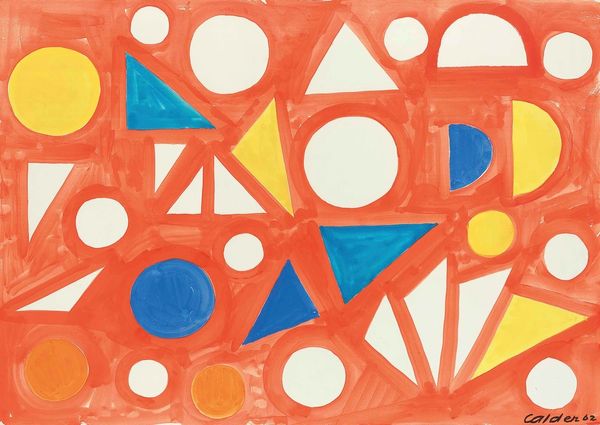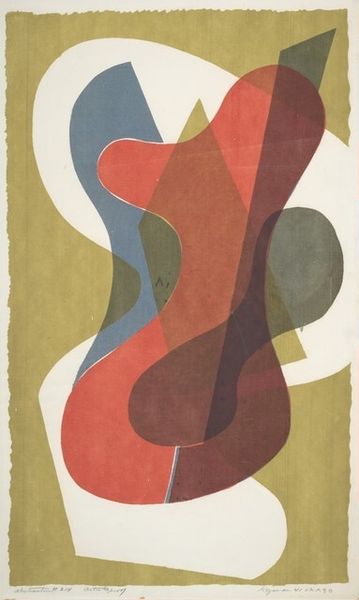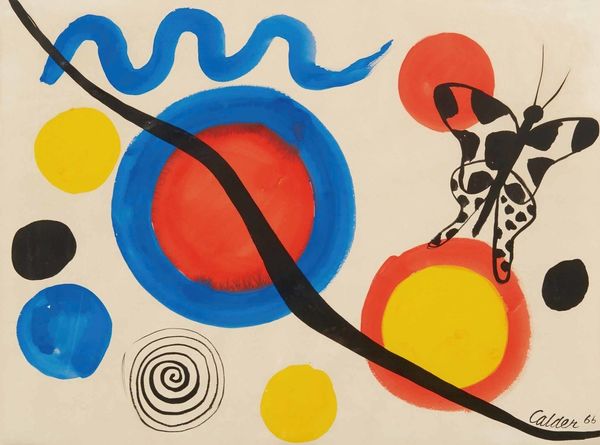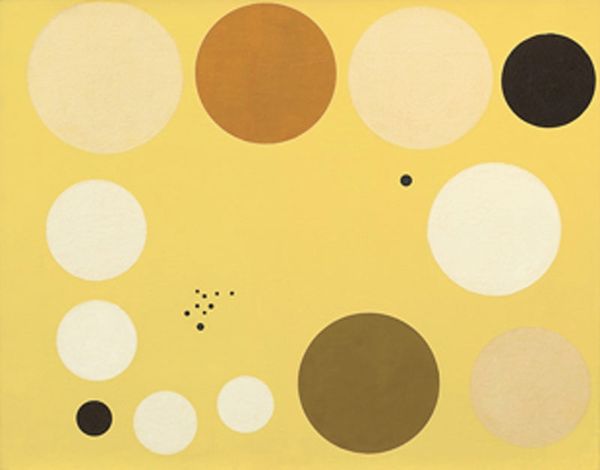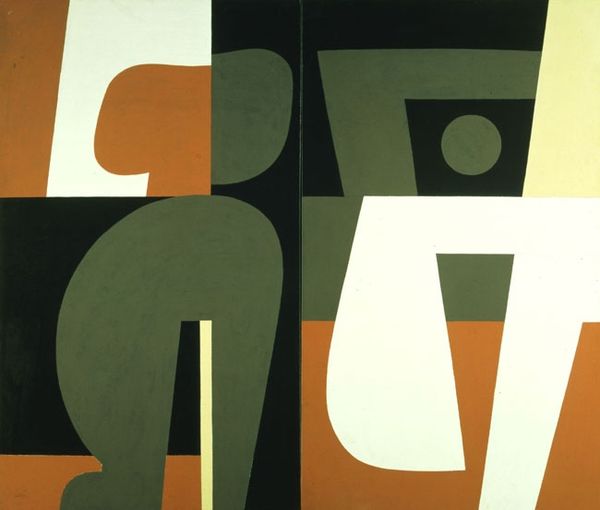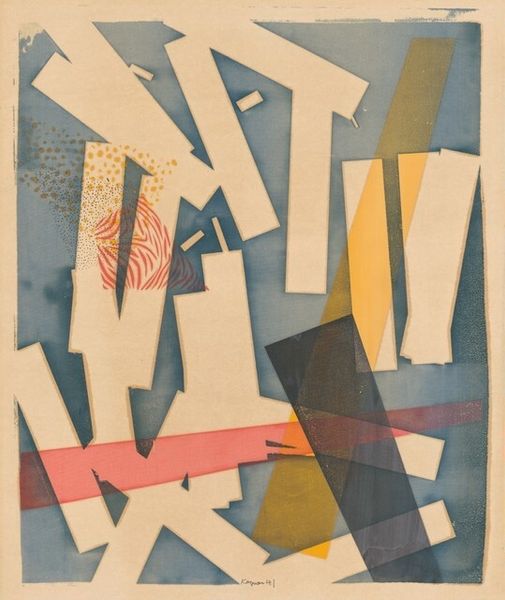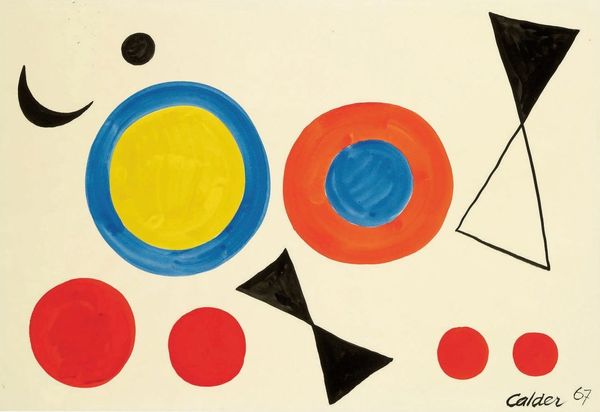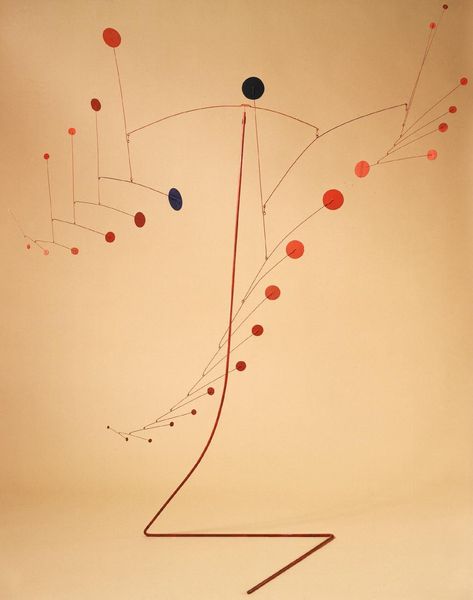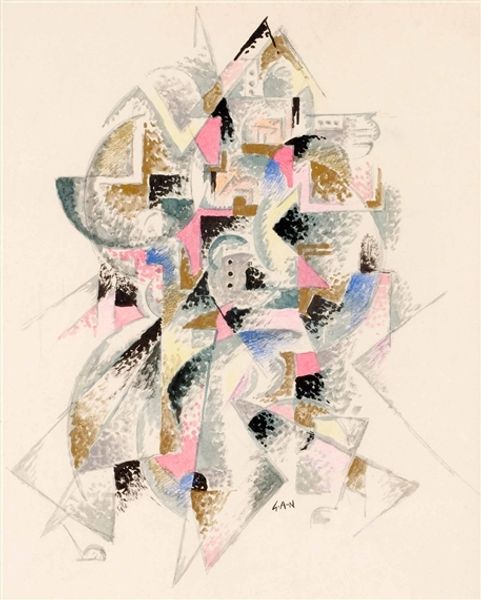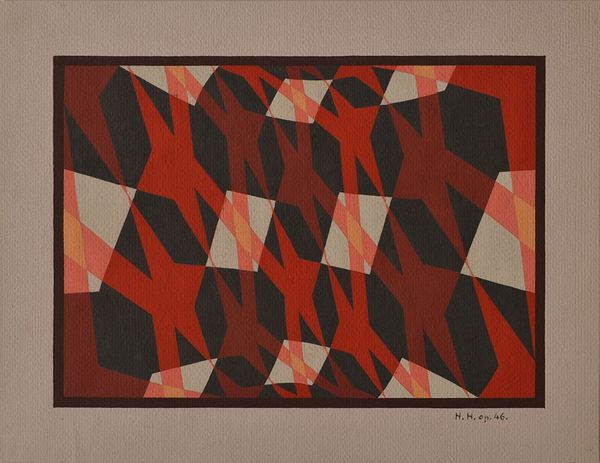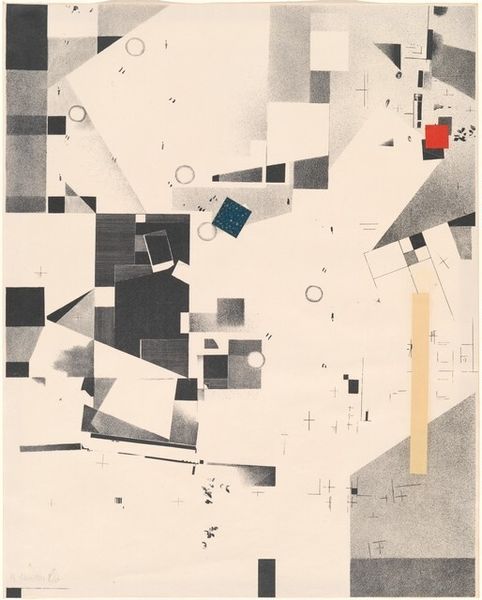![Design for an unidentified project.] [Color study of an abstract theme by Winold Reiss](/_next/image?url=https%3A%2F%2Fd2w8kbdekdi1gv.cloudfront.net%2FeyJidWNrZXQiOiAiYXJ0ZXJhLWltYWdlcy1idWNrZXQiLCAia2V5IjogImFydHdvcmtzL2ZkNDRhZDkzLTVjYmMtNGE3Mi1hNmI1LWJiNDY2NWRlNTAxYS9mZDQ0YWQ5My01Y2JjLTRhNzItYTZiNS1iYjQ2NjVkZTUwMWFfZnVsbC5qcGciLCAiZWRpdHMiOiB7InJlc2l6ZSI6IHsid2lkdGgiOiAxOTIwLCAiaGVpZ2h0IjogMTkyMCwgImZpdCI6ICJpbnNpZGUifX19&w=2048&q=75)
drawing, mixed-media, graphite
#
drawing
#
mixed-media
#
abstract
#
pattern background
#
geometric
#
ceramic
#
graphite
#
modernism
Copyright: Public Domain: Artvee
Editor: This is Winold Reiss’s "Design for an unidentified project./Color study of an abstract theme," created around 1935 using mixed media, graphite, and drawing. It has a kind of playful yet structured vibe to me, with the circles and stripes... it feels modern, but not cold. What do you make of it? Curator: I find this piece fascinating in its ambiguity. The "unidentified project" aspect points to Reiss's commercial work, designs meant for mass production. While seemingly abstract, the geometric shapes and the modernist style position it within the larger socio-political context of the 1930s. The use of "ceramic" like patterns here, coupled with Reiss's German roots, makes me wonder about a possible connection to the Bauhaus movement, its ideals of integrating art and craft and its influence on American design. What was the intended public for a work like this? Editor: That's a really interesting connection, I hadn't considered it. So you’re saying it might have been meant for commercial application, trying to bring modern art to everyday life? Curator: Precisely. Reiss was deeply invested in portraying cultural identities, notably through his portraits, and simultaneously worked in commercial design. This piece is maybe a place where those intersected. The institution – be it a company or a gallery – would ultimately determine its impact, and control its circulation. Is it displayed as fine art or intended to inspire industrial production? That would dramatically shape the reception of this work. Editor: I see. So understanding where and how it was intended to be shown is crucial. Curator: Absolutely. And considering the power structures implicit in displaying and categorizing art—that impacts how the public engages with pieces like these. Editor: That makes me think differently about abstract art – it’s not just about the aesthetic! Curator: Exactly. It's about how art engages with broader societal forces. I'm glad we could look at that together. Editor: Me too, I learned a lot! Thank you.
Comments
No comments
Be the first to comment and join the conversation on the ultimate creative platform.
